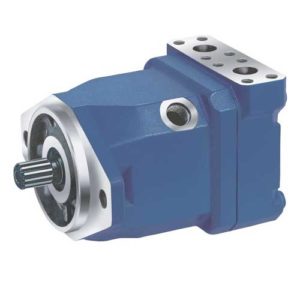The Origin of Hydraulics and Pascal’s Principle
Did you know that current pressure applications within hydraulic Pumps systems stem from a principle developed nearly 370 years ago?
French scientist Blaise Pascal first came up with an idea in 1653 that became called Pascal’s Law, a principle that allows large forces to be created with relatively little effort. The law is often explained in different ways, but it can be summarized as “When pressure is applied to an incompressible fluid, the pressure is the same in all directions”.
Pascal’s law remains an important fundamental element in determining the use of compressible fluids (such as oil or water) in hydraulic systems to transfer forces from one location to another within that fluid.
Pascal’s findings remain fundamental to understanding fluid pressure transmission in all hydraulic systems.
What is Pascal’s law?
Pascal (1623-1662) was a French mathematician, physicist, and philosopher known for developing modern probability theory. He also formulated the concept of pressure and showed that pressure in a fluid, specifically an incompressible fluid, travels through the fluid in all directions.
Pascal’s law (also known as Pascal’s principle or fluid pressure transfer principle) is a principle in fluid mechanics that states that a change in pressure in one part of a closed container is transmitted without loss to each part of the fluid and to the walls of the container.
Therefore, pressure is equal to force divided by the area in which it works.

Why is this important?
Hydraulic Motors force is applied to many mechanical systems. Understanding many of the basics, such as Pascal’s Law, as an end user can help you design, troubleshoot, and maintain fluid power systems.
For example, a typical hydraulic system with two fluid-filled cylinders can be covered with pistons and connected to a tube called a hydraulic line. The change in pressure without reducing will be transmitted to all parts of the closed fluid, according to Pascal’s principle.
In hydraulic pump, which we specialize in here at HPS, the mechanical energy of a hydraulic motor is converted into hydraulic energy, specifically, flow. This flow creates the pressure necessary to send fluids to other parts of the hydraulic system: cylinders, actuators, etc.
It all starts with a vacuum created at the pump inlet by the mechanical energy of the pump. This vacuum used atmospheric pressure to force fluid from the tank into the inlet line leading to the pump. Then the fluid passes into the hydraulic system.
The pumps themselves do not generate pressure, rather the flow of fluid from the pump generates pressure and force after leaving the pump, which demonstrates Pascal’s principle about pushing fluid into the elements of the system.
In other applications, such as hydraulic brakes, the pressure exerted on one piston causes an equal increase in pressure on the other pistons in the system, which is the hydraulic pressure.
Pascal and the history of hydraulics pumps
More than three centuries after Pascal first asked if we could channel the forces of fluids, the potential of confined fluids is reaching new frontiers.
But others have contributed to this progress.
The origins of hydraulics may have been first put into practice in 1738, when Swiss mathematician Daniel Bernoulli is credited with his first use of pressurized water in mills and pumps.
In 1975, an Englishman named Joseph Brahma patented the first hydraulic press during the Industrial Revolution, which allowed cranes to be lifted, as well as to start machines for cutting and stamping.
Over time, innovations in technology and new materials created greater forces and generated more power, as well as faster and more impressive production. The oil finally provided more control for the pressurized motion.
Today, hydraulics can give more than 10 times the power of an electric motor and are more effective at lifting heavy objects and forcing objects to move.
Pascal’s observations provided the basis for these developments in hydraulics, one of the most important developments in modern mechanical technology.
Read about Denison’s innovative beginnings

